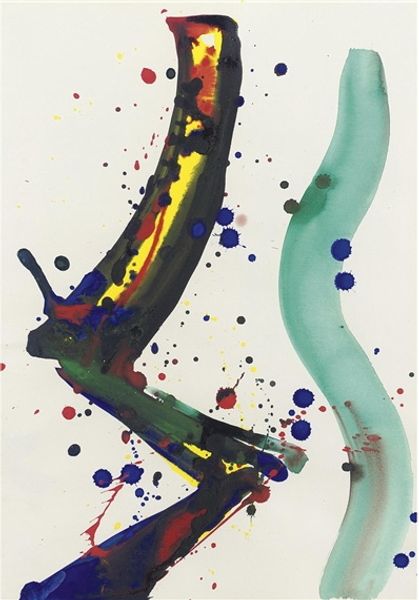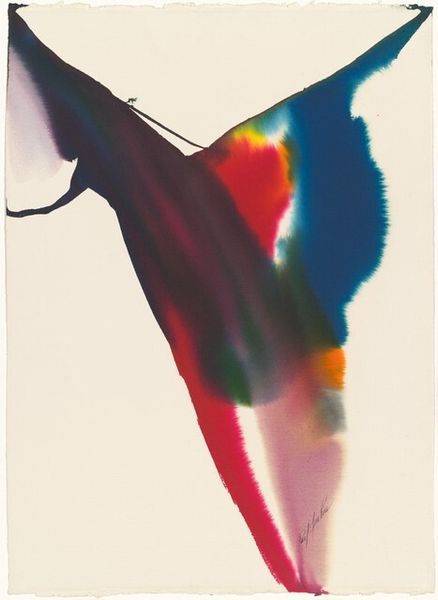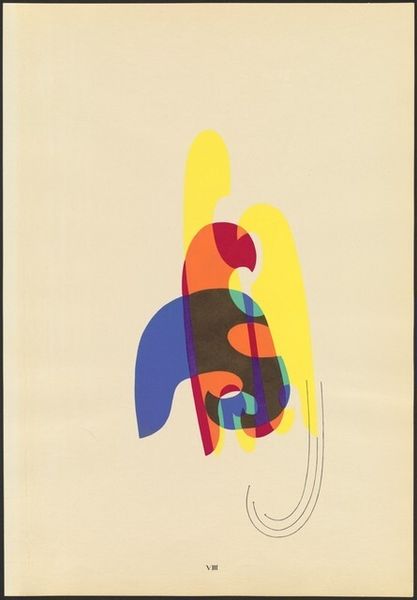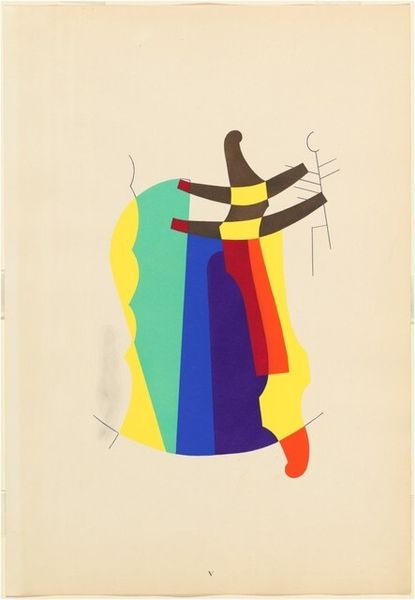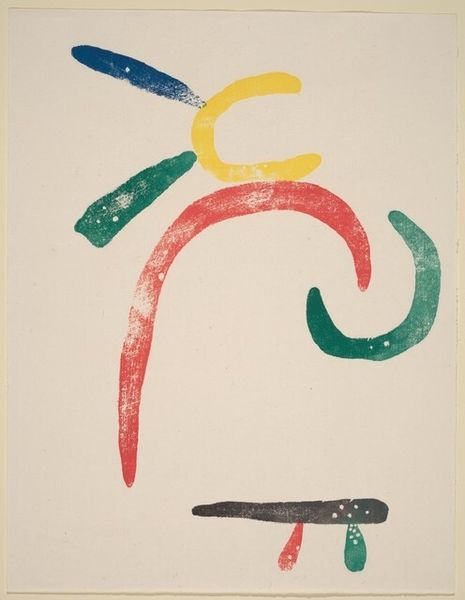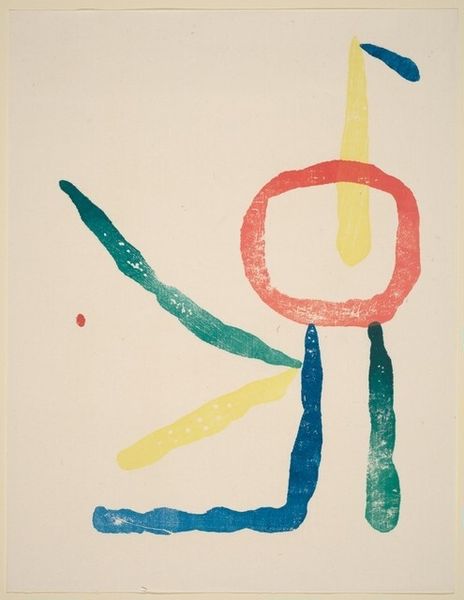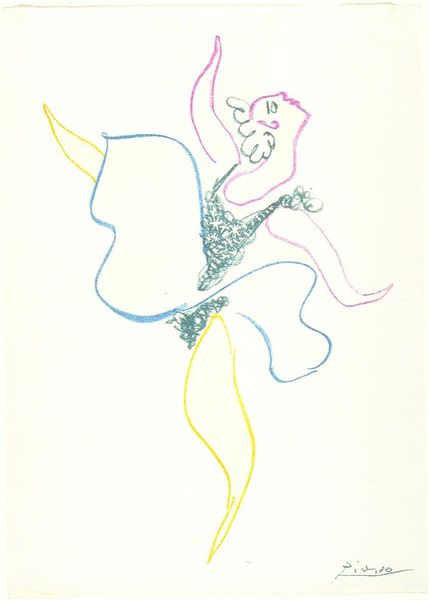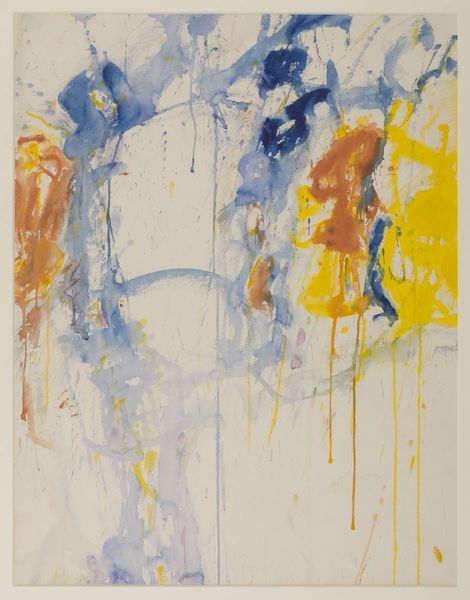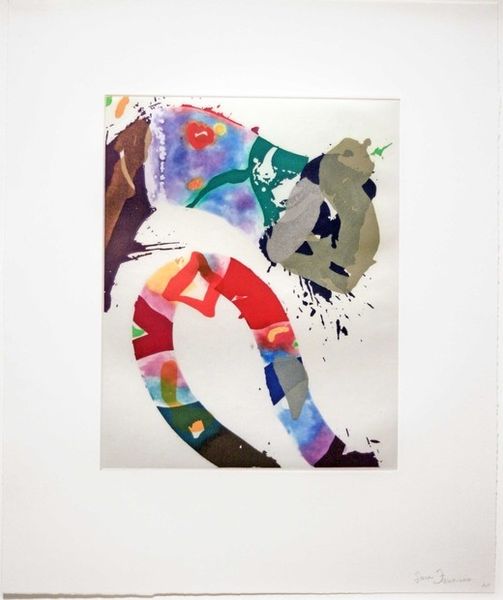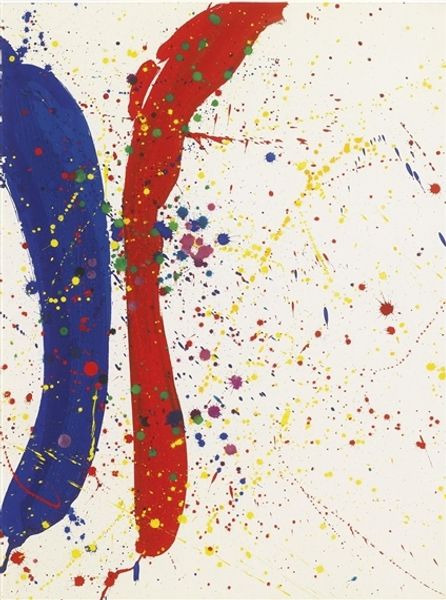
drawing, mixed-media, print, watercolor
#
portrait
#
drawing
#
mixed-media
# print
#
figuration
#
watercolor
#
pop-art
#
sketchbook drawing
#
watercolour illustration
Dimensions: sheet: 45.09 × 30.8 cm (17 3/4 × 12 1/8 in.)
Copyright: National Gallery of Art: CC0 1.0
Curator: Standing before us is Jim Dine's 1968 mixed-media work, "Dorian Gray with Rainbow Scarf." It combines watercolor and drawing techniques in a print, reflecting the Pop Art sensibility of the era. Editor: My first thought? Playful melancholy. There’s a starkness in the faceless figure juxtaposed with this vibrant burst of rainbow. The sketch-like quality also lends an air of fragility, which is interesting considering the subject. Curator: Yes, and that's typical of Dine's style during that period. It fits right into the cultural context, where artists were embracing the accessible and everyday, turning them into iconic, mass-produced images, or commenting on consumer culture. This piece also fits into the rise of figuration during that period. It challenges the art establishment. Editor: It really resonates with the decadence and decay at the heart of the Oscar Wilde story. Look at how the rainbow, traditionally a symbol of hope and promise, droops and almost seems to stain the figure's pristine white coat. There is the visual element of how Wilde used color to create meaning in "The Picture of Dorian Gray". Curator: I agree, and there's an intentional juxtaposition there. Dine created it when he had the new art printers available in Europe. Editor: And what do you make of the facelessness, then? Curator: That, I think, really drives home the thematic weight. In terms of cultural symbols, this reflects Wilde's own themes of identity, of the masking, if you will. It points to how he really thought about identity construction in social and historical terms. The Woolworth paste jewelings that rest around his shoulders give a performative aspect. Editor: I think you are absolutely right; there's also something unnerving. It denies us a personal connection with Dorian. It forces us to confront the idea of inner corruption, a loss of the soul that lies beneath the surface, symbolized perhaps by those cheap jewels and the draining colors. Curator: Perhaps the jewels are supposed to suggest wealth and class and status within a culture that values status symbols above substance, but these things turn out to be valueless as his inner self decays. Ultimately, it’s the emotional narrative. It does seem like we are invited into the history of that character. Editor: Precisely. Dine gives Wilde's moral parable a starkly modern aesthetic that makes one re-examine what images signify in that society and beyond. Curator: I suppose the work also challenges the cultural conventions related to images of youth and beauty. Editor: Yes, well, I think that seals my take: the power lies in how these symbols – absence of face, the artificial embellishments – are interwoven. It certainly goes far beyond surface representation.
Comments
No comments
Be the first to comment and join the conversation on the ultimate creative platform.
